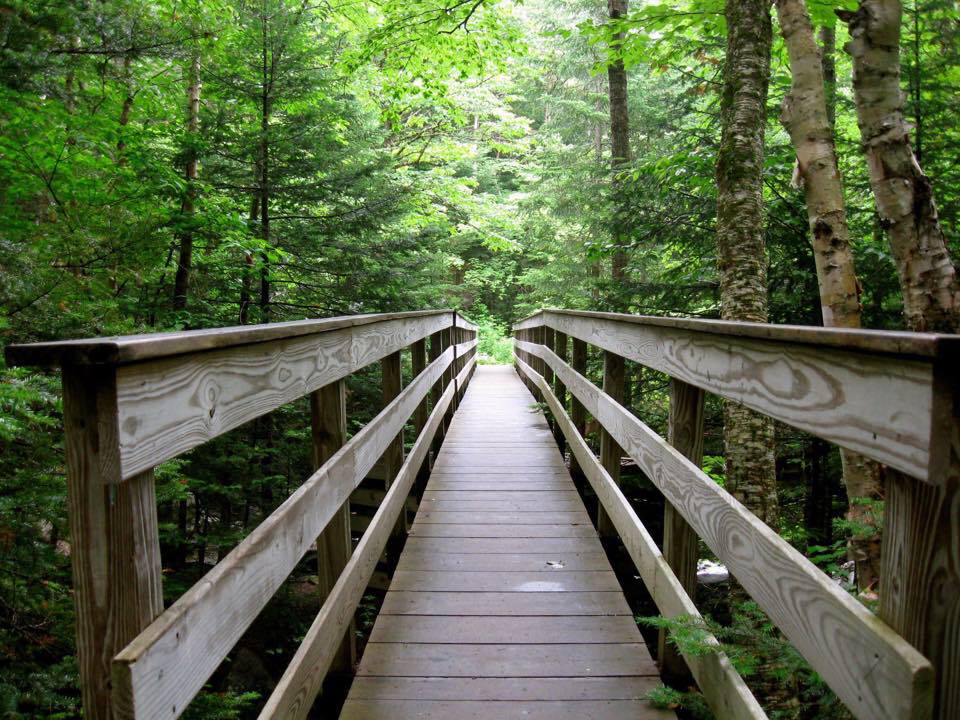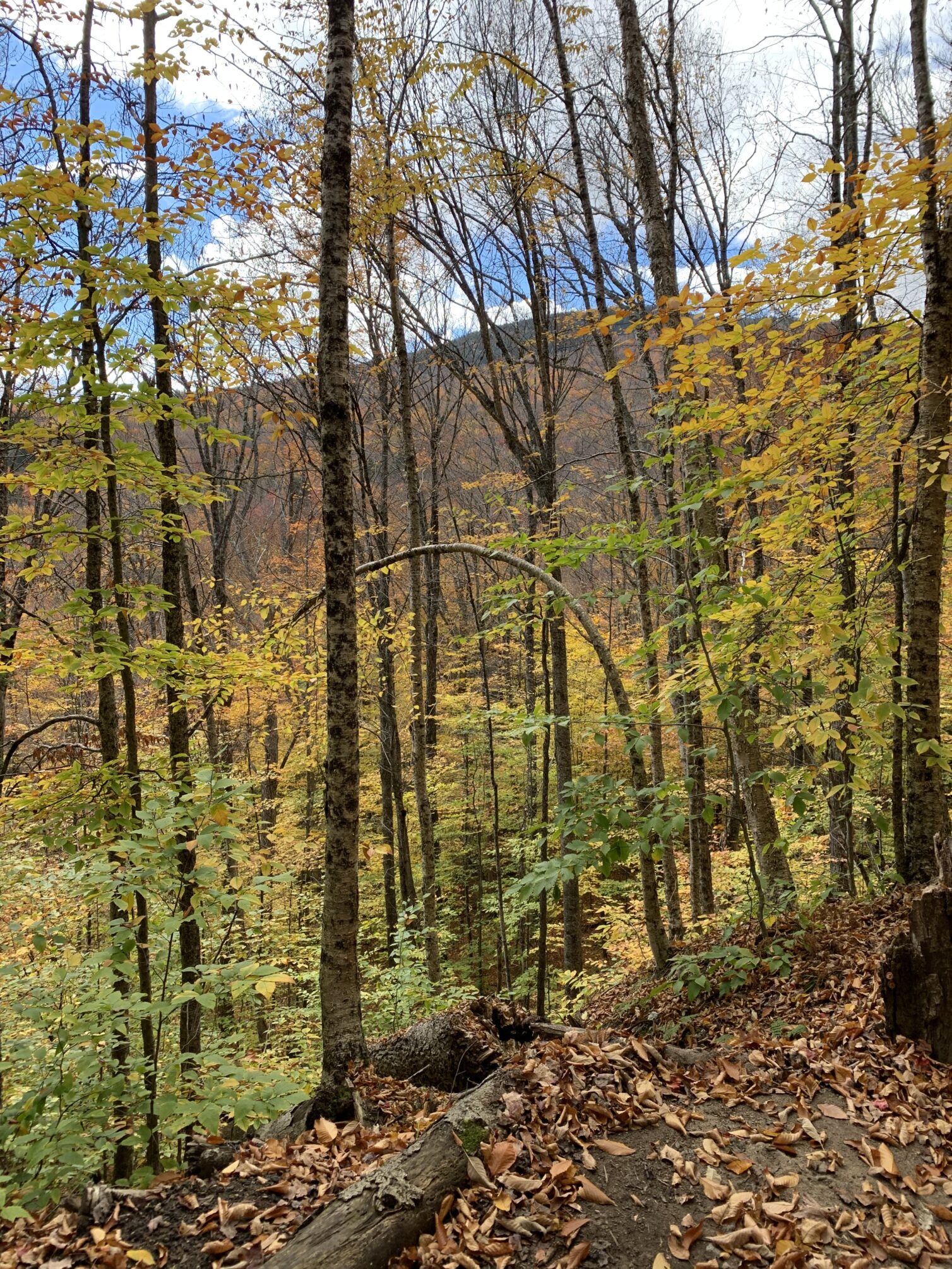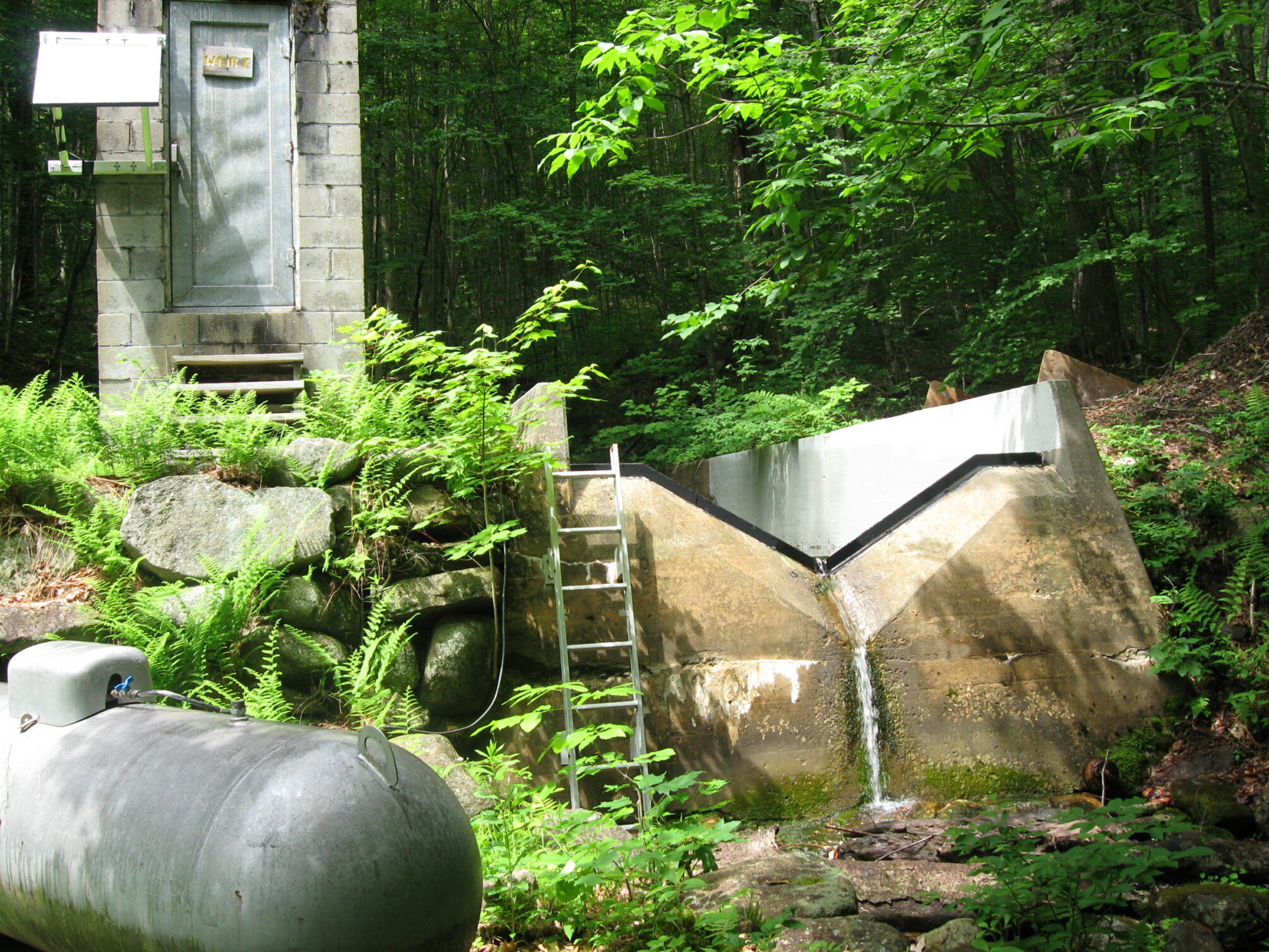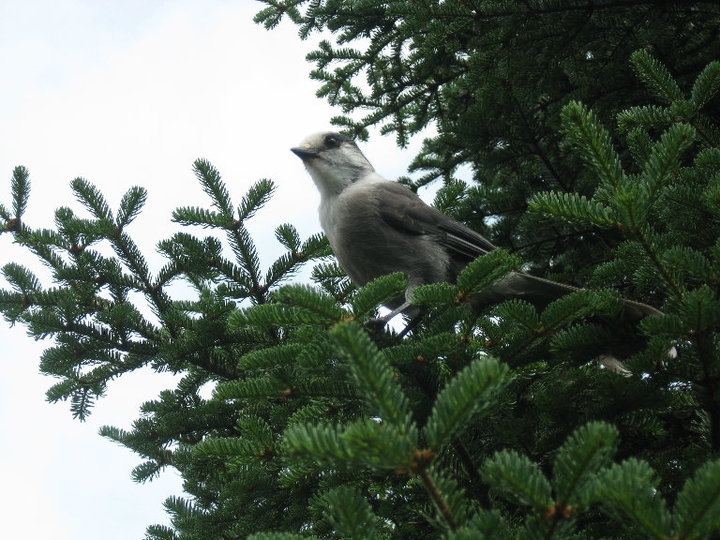Considerable work happens behind the scenes as Sarah Garlick, Hubbard Brook’s Director of Science Engagement, brings together researchers and forest managers to identify shared research priorities in New Hampshire’s White Mountain National Forest.
By Jenna Zukswert, graduate student at SUNY ESF and the Hubbard Brook LTER
“What are people excited about? What should we create together?”
Sarah Garlick, Senior Director of Science Engagement at the Hubbard Brook Research Foundation, posed these questions to a Zoom gathering of researchers from the Hubbard Brook Experimental Forest LTER site and managers from the White Mountain National Forest in New Hampshire in December, 2022. The 11 participants’ computer screens were populated with small squares depicting individuals, all dressed in flannel, outdoor gear, or sweaters; all seemingly eager to begin a discussion they had been anticipating for months. Virtual backgrounds ranged from blurred, to bookshelves, to a rainbow over a field in autumn. I, a PhD student with an interest in bridging the gap between researchers and practitioners, was eager to observe.

Credit: Jenna Zukswert, CC BY-SA 4.0.
Convening Work Behind the Scenes
Co-production of knowledge is the process by which different groups, such as scientists, managers, and community leaders, gather to more holistically produce knowledge to address sustainability challenges (Norström et al. 2020). The products of this process are often “win-win”: peer-reviewed literature to further research, new knowledge to inform natural resource management and policy, translational products for stakeholders, as well as new networks and collaborations established among interrelated communities. Hubbard Brook has engaged in knowledge co-production for decades; since the early 2000s, the Science Link program provided an arena for scientists, policy advisors, and others to collaborate on important issues and produce journal articles, fact sheets, reports, and more. For co-production efforts like Science Links to be successful, trust and shared goals have to be established early on, which is a process in and of itself. The Zoom meeting I witnessed in December was a glimpse into this work for a new set of potential collaborators.

Credit: Jenna Zukswert, CC BY-SA 4.0.
The idea for this particular collaboration stemmed from a report delivered by a biologist from the White Mountain National Forest at the annual Hubbard Brook Cooperators’ Meeting in July, during which the biologist shared biodiversity research needs from the White Mountain National Forest. Hubbard Brook is a 7,800-acre portion of the White Mountain National Forest run by the USDA Forest Service. The annual Cooperators’ Meeting provides a chance for researchers to interact and learn about each other’s work, and can be a venue for other stakeholders to communicate with researchers as well. Researchers who work at Hubbard Brook hail from universities around the world, so they can otherwise be unaware of possible synergies between their research and management. Following the biologist’s report, Garlick and several scientists who do research at Hubbard Brook began to discuss collaborating with managers of the National Forest on biodiversity projects that would involve and interest these professionals.
The preparation and facilitation of this meeting between Hubbard Brook researchers and White Mountain National Forest managers is one example of the “convening work” done by Garlick for the Hubbard Brook LTER site. “Being a good convener means setting intentional purposes for why you’re gathering people”, said Garlick during a conversation with me, held before the Zoom meeting. “A lot of my work is creating good meetings among partners. And then that leads to creating engagement opportunities with external decision-makers or community members.” In my conversation with Garlick ahead of the meeting, I learned about the considerable work that Garlick does behind the scenes that makes the formation of new collaborations like this possible.
Garlick acted as the liaison between the managers and researchers, speaking with them separately about the possibility of collaborating. When it was clear that both groups were interested, she set an intention for their first meeting, sending out a one-page discussion guide that outlined the goal of the first meeting (to brainstorm ideas for a possible partnership) as well as larger goals of the partnership, potential ideas that had already arisen, and questions to consider. Then, she brought the groups together.

Credit: Jenna Zukswert, CC BY-SA 4.0.
Garlick made several deliberate decisions ahead of the meeting as she planned how the meeting would unfold. Considerations like how introductions are done, how the room is laid out, and who is invited all influence the power dynamics in a meeting, and Garlick does what she can to encourage a “multi-directional flow of ideas” that facilitates “people feeling welcome to be able to participate.” When Garlick describes her work, she also talks about how to cultivate reciprocity, such as “What are people giving, and what are people getting in that meeting?…What incentivizes people? What do people need?” The result of her conscientious work is a Zoom meeting between researchers and managers that feels effortless.
Facilitating the First Meeting
The Zoom meeting was attended by five Hubbard Brook-affiliated researchers and four representatives from the White Mountain National Forest, including a silviculturist and the wildlife program leader. I was invited to observe. Garlick greeted everyone as soon as they entered the Zoom room—her way of helping everyone feel welcome to participate—and then started the meeting by reviewing the agenda before opening the floor to participants. The Zoom room was silent, but Garlick allowed the silence to occur as participants formed their own thoughts. Eventually, one of the researchers expressed her interest in thinking about wildlife movement patterns and how this intersected with forestry. From there, the ball started rolling. Throughout the meeting, Garlick would ask the researchers to clarify what they were discussing for the managers, facilitating the translation of scientific terms into ones with which managers might be more familiar; for example, Garlick requested that the researchers clarify a wildlife tracking system they were talking about and explain where they might want to go next with this research.

Credit: Jenna Zukswert, CC BY-SA 4.0.
After Garlick’s initial facilitation, the discussion flowed naturally as researchers asked managers for information about practices and procedures. Participants supported each others’ ideas, but were also comfortable enough to politely challenge them, such as when another researcher questioned whether managing for a single species might jeopardize the habitat quality for another, and how they should approach that issue. Several research questions that emerged over the course of the conversation were what one researcher described as “cosmic questions in ecology” that also have “tremendous practical value,” which, to me, seems like a good indicator of successful reciprocity.
Near the end of the meeting, both researchers and managers expressed their appreciation for the meeting. “This is hugely valuable, just putting names to faces…. it’s really great to hear some of what your needs are because I’m always looking at how I can be most helpful in research,” said one researcher. A manager remarked, “I really appreciate interest from researchers [about] what would be helpful to us. Because we… obviously use it and rely a lot on research to guide our management… having folks looking at the specifics and the nuances that will most help us would be really fabulous.” Garlick’s goal in this meeting, to help these researchers and managers connect and start brainstorming, was met.
Co-Production of Knowledge in the LTER Network
As our society grapples with numerous environmental issues, LTER researchers can play a major role in developing solutions; an effective way to approach this is through the intentional co-production of knowledge. Few LTER sites have an individual like Garlick who is dedicated to this role, but it was clear to me from interacting with Garlick and observing this meeting that roles like hers are integral to the success of these collaborations. What might appear as effortless collaboration on the surface can be the result of deliberate convening work behind the scenes that requires much thought and care. Of her role in the Zoom meeting, Garlick says, “I can broker that conversation without having the scientists having to do all of that work on top of all the work they already do, and without the managers having to create relationships with, like, the 50 scientists that work at Hubbard Brook…sometimes it’s worth having a dedicated person to really be doing that boundary work.”
For those interested in pursuing co-production of knowledge, Garlick recommends thinking about your networks and the connections to your research. “What are the societal impacts of the research you want to do? And who are the societal actors who are already working in those spaces?” Garlick recommends getting to know these people and focusing on building the relationships, taking care to “listen and learn.”












